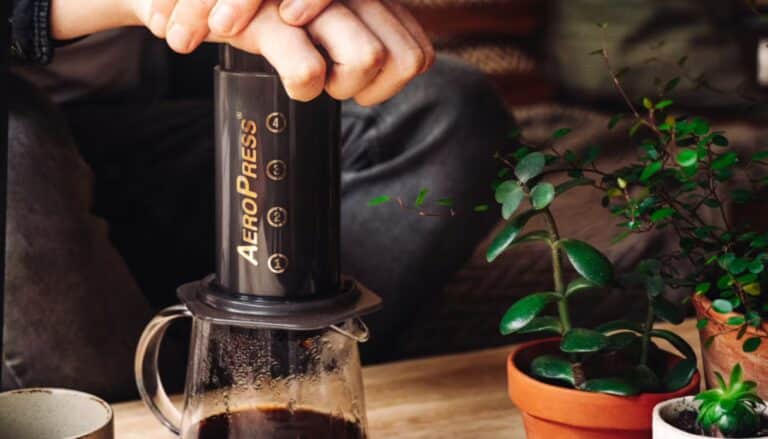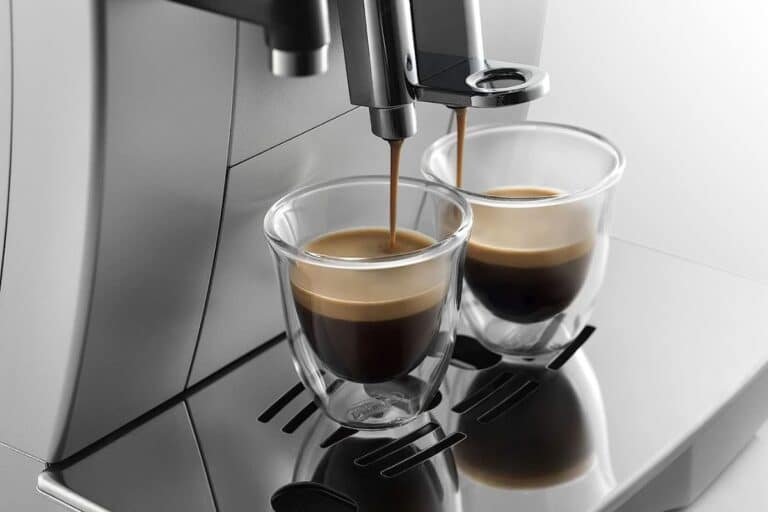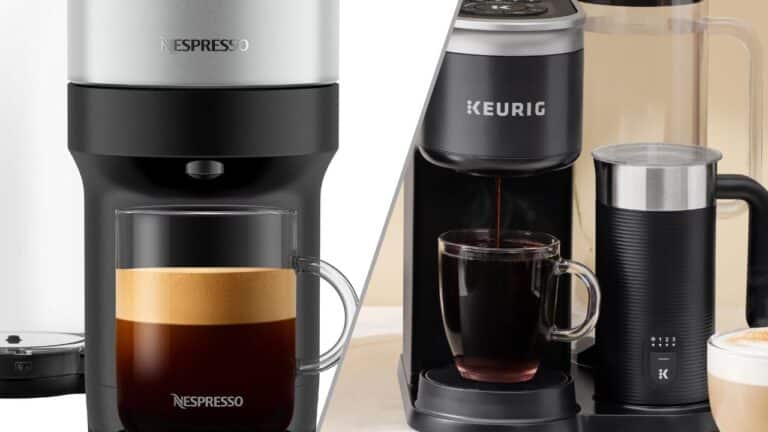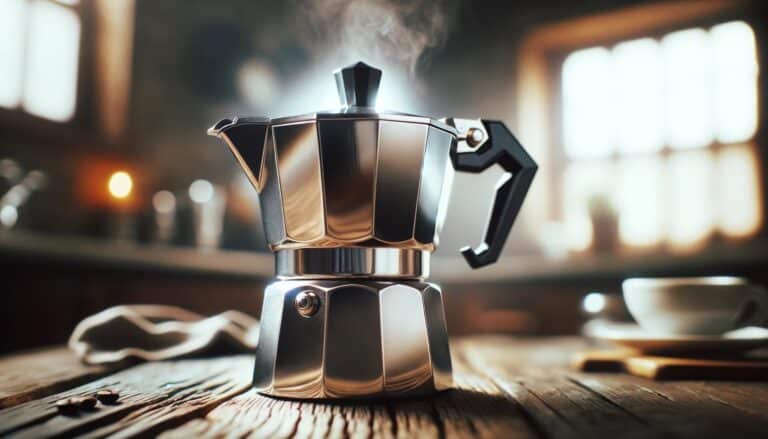Coffee is not just a beverage; it’s a global phenomenon. From the bustling streets of New York to the quaint cafés in Paris, coffee is the fuel that powers millions of lives daily. Revered for its invigorating aroma and rich flavors, coffee has become an integral part of cultural rituals and daily routines across the world. Its popularity is unparalleled, making it the second most traded commodity on the planet, only trailing behind oil.
In this world of coffee enthusiasts, the art of brewing takes center stage. The method of brewing coffee plays a pivotal role in shaping its taste, aroma, and quality. Whether it’s a robust espresso to kickstart the morning or a smooth cold brew for a hot afternoon, the way coffee is brewed can transform its character entirely.
From the traditional drip method to the innovative AeroPress, each coffee maker offers a unique approach to extracting flavor and aroma from the coffee beans. The choice of coffee maker can greatly influence the end product, making it an important decision for any coffee lover.
In this article, we aim to explore the various types of coffee makers available in the market. We will delve into the specifics of each type, from the classic French Press to the modern Single Serve machines, uncovering the nuances that make each method special. Whether you are a seasoned coffee aficionado or a curious beginner, this guide will help you navigate the diverse world of coffee makers, ultimately enhancing your coffee brewing experience.
Join us on this caffeinated journey as we explore the different ways to brew that perfect cup of coffee, each method bringing its own unique flavor and experience to the table.
Types of Coffee Makers
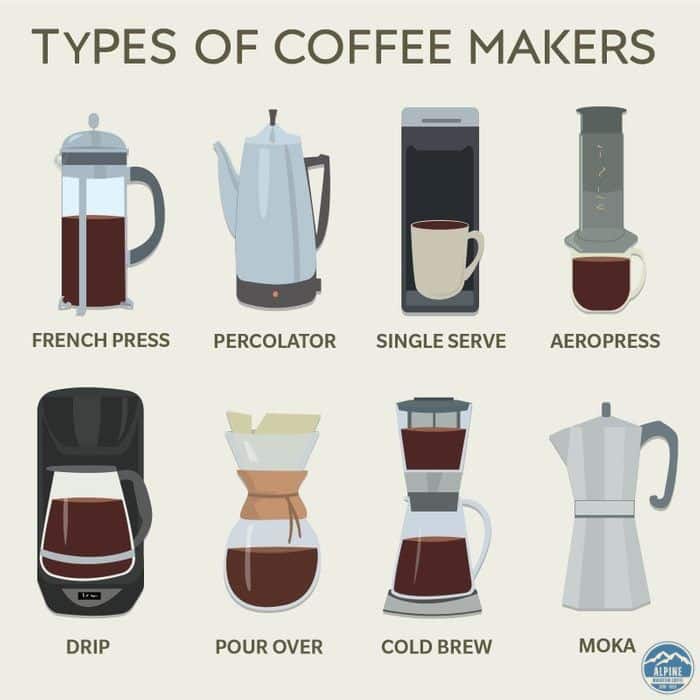
French Press
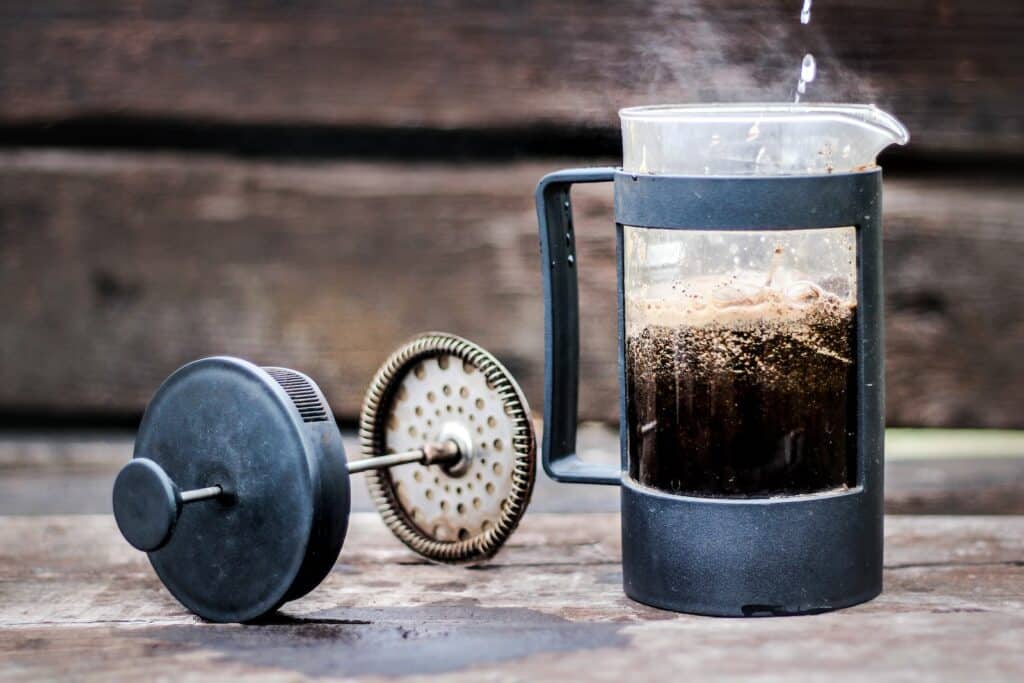
Description of the French Press Method: The French Press, also known as a press pot or plunger pot, is a classic and widely used method for making coffee. It consists of a cylindrical glass or stainless steel container with a plunger and a built-in filter screen. The beauty of the French Press lies in its simplicity and ability to extract a full-bodied and flavorful cup of coffee. This method involves steeping coarse coffee grounds in hot water, allowing the extraction of oils and flavors, followed by pressing the plunger to separate the grounds from the brewed coffee.
Steps Involved in Brewing Coffee with a French Press:
- Preparation: Start by heating water to just below boiling (around 195°F to 205°F). While the water heats, grind your coffee beans to a coarse consistency.
- Adding Coffee: Place the ground coffee into the French Press. A general rule is to use about one tablespoon of coffee for every 4 ounces of water.
- Brewing: Pour the hot water over the coffee grounds in the French Press. Stir gently to ensure all the grounds are saturated.
- Steeping: Place the lid on the French Press with the plunger pulled all the way up. Let the coffee steep for about 4 minutes. This time can be adjusted for stronger or weaker coffee.
- Plunging: After steeping, slowly press the plunger down, which separates the grounds from the liquid.
- Serving: Immediately pour the coffee into cups to prevent over-extraction, which can lead to bitterness.
Advantages:
- Full Flavor Extraction: The French Press allows for maximum flavor extraction from the coffee grounds, resulting in a rich and robust cup.
- Control Over Strength: You can easily adjust the strength of your coffee by altering the brewing time.
- No Paper Filters: This method doesn’t require paper filters, allowing more of the coffee’s natural oils and flavors to be retained.
- Simplicity: The French Press is straightforward and easy to use, requiring no electricity.
Disadvantages:
- Sediment: Some fine grounds may escape through the filter, leading to sediment in your cup.
- Temperature Control: Maintaining the correct water temperature requires attention, as there is no built-in heat source.
- Manual Cleaning: The coffee grounds can be messy to clean out, and the filter requires regular cleaning to ensure taste quality.
In summary, the French Press is a beloved choice for many coffee lovers due to its ability to produce a rich, flavorful brew. Its simplicity and control over the brewing process make it a rewarding method for those who appreciate the finer nuances of coffee.
Percolator
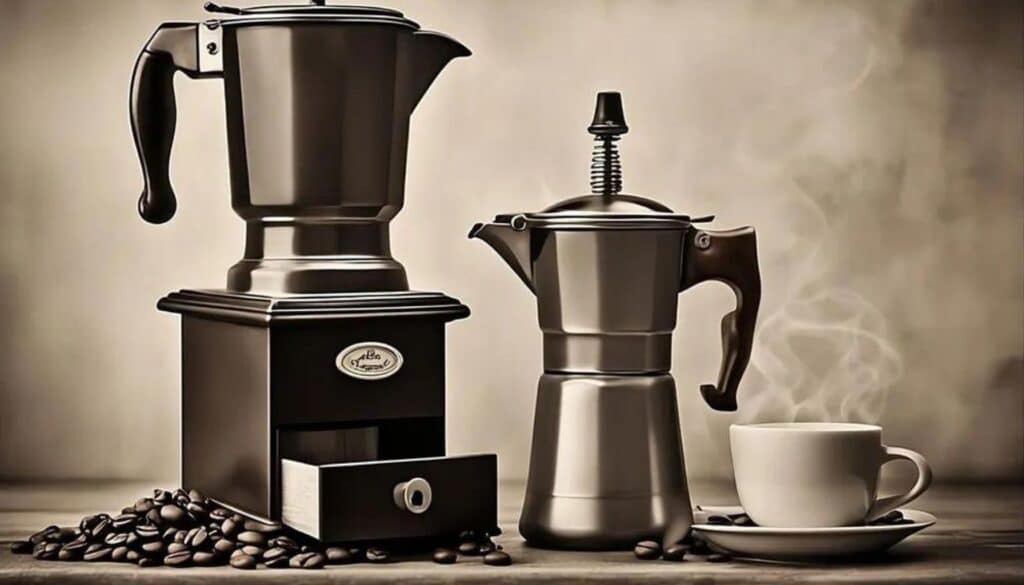
Historical Background of the Percolator: The coffee percolator has a storied past, tracing its origins back to the early 19th century. Patented in 1865 by American soldier and inventor James Nason, the percolator underwent several design improvements, with the most notable one by Hanson Goodrich in 1889. This design, with a vertical tube and a perforated basket, became the standard for percolators. The percolator was a household staple for coffee brewing until the mid-20th century when drip coffee makers began to gain popularity. Despite this, it retains a nostalgic charm and is still favored by many for its unique brewing process.
How a Percolator Works: A percolator consists of a pot with a small chamber at the bottom, a vertical tube extending from this chamber, and a perforated basket at the top of the tube for the coffee grounds. The brewing process involves:
- Water Heating: Water in the bottom chamber is heated until it boils.
- Cycling Through Grounds: The boiling water is forced up the vertical tube and over the coffee grounds in the top basket.
- Repeating the Process: The water, now mixed with coffee extract, drips back down into the lower chamber, and this cycle repeats. During this process, the water passes through the coffee grounds multiple times, continuously extracting flavor.
- Completion: Once the brewing process is deemed complete (usually by a change in bubbling sound), the percolator is removed from the heat source.
Pros of Using a Percolator:
- Rich and Strong Coffee: Percolators are known for producing a robust and strong cup of coffee, ideal for those who prefer a more intense flavor.
- Durability and Portability: Many percolators are made from sturdy materials like stainless steel, making them durable and perfect for outdoor settings like camping.
- No Need for Electricity: Stovetop percolators don’t require electricity, adding to their versatility.
Cons of Using a Percolator:
- Risk of Over-Extraction: The repeated cycling of boiling water through the grounds can lead to over-extraction, making the coffee bitter.
- Less Control Over Strength and Flavor: Compared to other methods, it’s harder to control the strength and flavor profile of the coffee.
- Requires Attention: To avoid over-extraction, you need to carefully monitor the percolating process, especially the timing.
In conclusion, the percolator holds a special place in the history of coffee brewing. While it may not offer the precision and control of modern brewing methods, it remains a beloved choice for those who enjoy its robust flavor and the nostalgic experience it provides.
Single Serve Coffee Makers
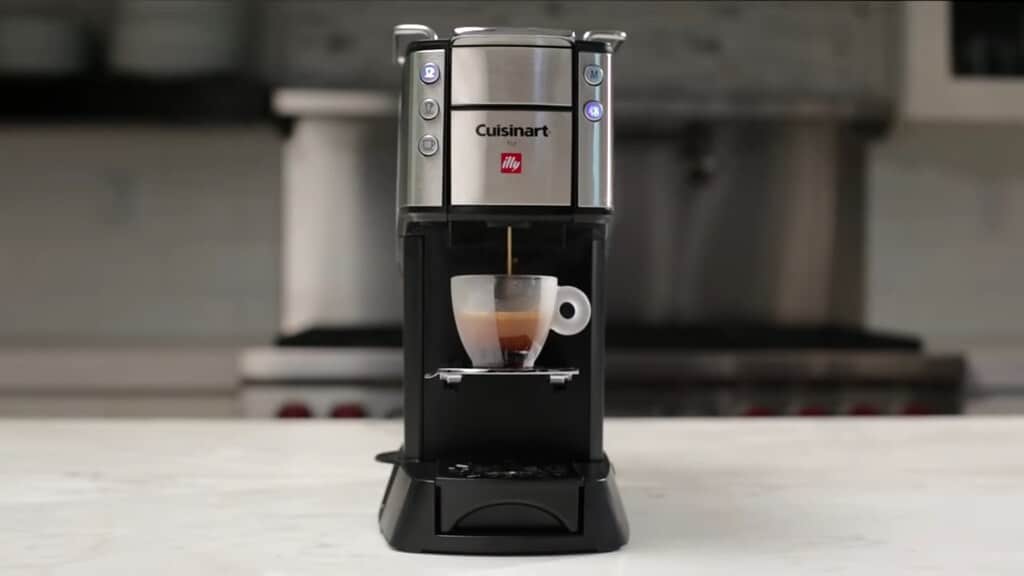
Overview of Single-Serve Coffee Makers: Single-serve coffee makers, epitomized by brands like Keurig and Nespresso, have revolutionized the coffee brewing experience. These machines use pre-measured coffee pods or capsules to brew a single cup of coffee at a time. The technology behind these machines allows for a variety of coffee styles – from classic drip to espresso-like beverages – all at the touch of a button. The convenience of single-serve coffee makers has made them a staple in many homes and offices.
Convenience and Speed of Single-Serve Machines:
- Ease of Use: One of the key selling points of single-serve coffee makers is their simplicity. With minimal preparation, users can enjoy a consistent cup of coffee every time.
- Speed: These machines heat up quickly and can brew a cup in just a few minutes, ideal for busy mornings or quick coffee breaks.
- Variety: Single-serve pods come in an array of flavors and strengths, catering to a wide range of preferences without the need for multiple coffee canisters.
- No Waste: Since they brew one cup at a time, there’s no concern about wasting a full pot of coffee.
Environmental Impact and Cost Considerations:
- Pod Waste: The convenience of single-use pods comes with an environmental cost. Many coffee pods are not biodegradable or easily recyclable, leading to significant waste.
- Eco-Friendly Alternatives: In response to environmental concerns, some brands now offer recyclable, compostable, or reusable pods.
- Cost Per Cup: While single-serve coffee makers are convenient, the cost per cup is typically higher compared to traditional brewing methods. The price of coffee pods can add up over time, especially for frequent coffee drinkers.
- Energy Consumption: These machines also consume electricity for heating water for each cup, though some models are designed to be more energy-efficient.
In summary, single-serve coffee makers offer unparalleled convenience and a variety of choices for coffee lovers. However, this convenience comes with higher costs and environmental considerations. For those seeking the quickest brew with a wide range of options, single-serve machines are an excellent choice, provided the environmental and cost aspects are kept in mind.
AeroPress
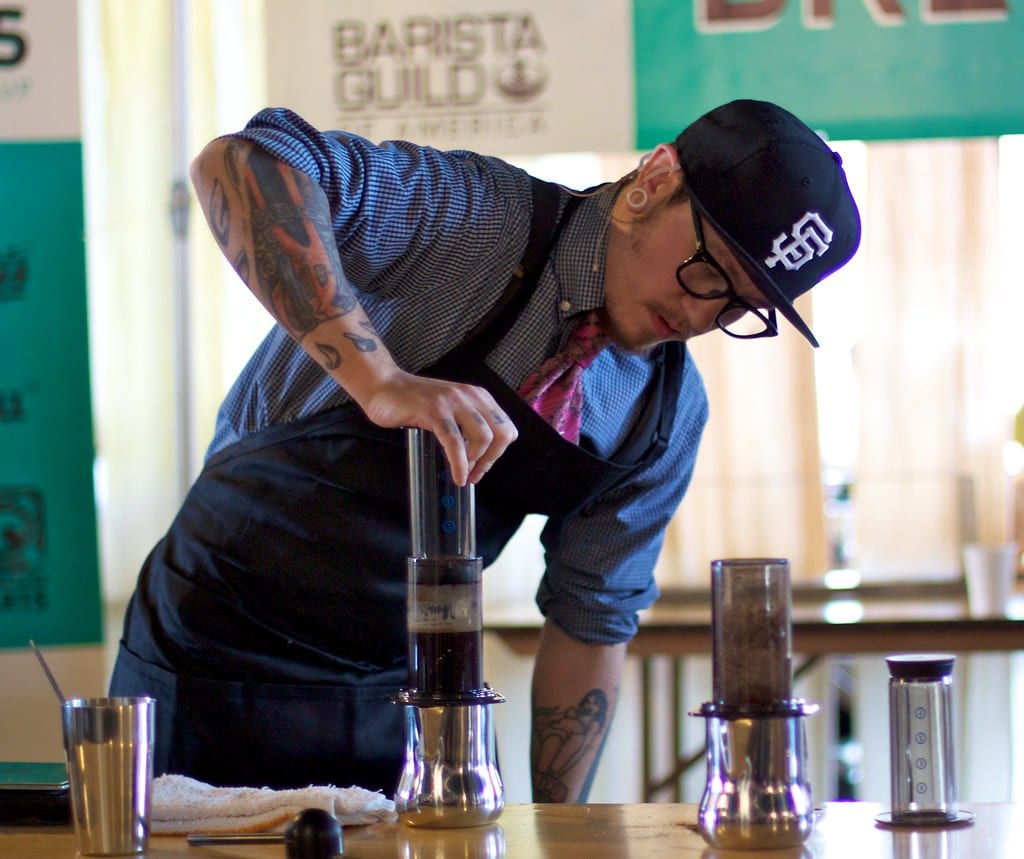
Introduction to the AeroPress: The AeroPress is a relatively new addition to the coffee world, invented in 2005 by Alan Adler. It’s a unique brewing device that combines the principles of a French Press with those of espresso-making. This lightweight, durable, and portable coffee maker has gained a cult following among coffee enthusiasts for its versatility and ability to produce a remarkably clean and flavorful cup of coffee.
Brewing Process and Versatility:
- The Setup: The AeroPress consists of two cylindrical chambers – one that fits inside the other. A filter (paper or metal) is placed at the bottom of the larger chamber.
- Adding Coffee and Water: Coffee grounds are added, followed by hot water. The temperature and coffee-to-water ratio can vary depending on the desired strength.
- Stirring and Steeping: After a brief stir, the coffee is allowed to steep for a short period, usually around 30 seconds to 1 minute.
- Pressing: The inner cylinder is then used to press down, forcing the coffee through the filter and directly into a cup.
- Versatility: The AeroPress allows for a lot of experimentation with grind size, water temperature, steeping time, and pressing technique. It can make a variety of coffee styles, from espresso-like concentrates to lighter brews.
Comparison with Other Coffee Makers in Terms of Taste and Strength:
- Taste Clarity: The AeroPress is known for producing coffee with exceptional taste clarity. The paper filter removes most of the coffee oils and fines, resulting in a cleaner cup than what you’d get from a French Press.
- Strength and Body: While it does not produce true espresso, the AeroPress can make a strong, concentrated brew similar to espresso. It offers a richer body than a drip coffee maker but is less robust than a French Press brew.
- Acidity and Bitterness: The AeroPress typically produces coffee with lower bitterness and acidity compared to drip and percolator methods. This is due to the shorter brewing time and lower temperature, which prevent over-extraction.
- Customization: One of the AeroPress’s greatest strengths is its versatility. It allows users to experiment and customize their brew to a greater extent than most other coffee makers.
In conclusion, the AeroPress is a unique and versatile coffee brewing method that stands out for its ability to produce a clean, flavorful cup of coffee. Its simplicity, combined with the capacity for customization, makes it a favorite among both coffee novices and connoisseurs.
Drip Coffee Maker
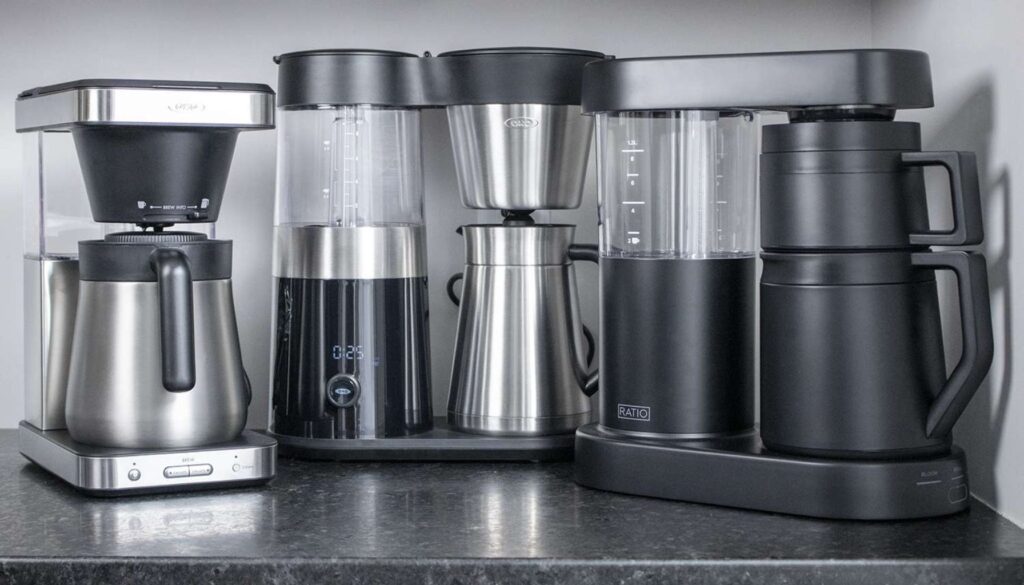
Explanation of the Drip Brewing Method: Drip coffee makers are among the most common and widely used coffee brewing devices in homes and offices worldwide. The principle behind drip brewing is straightforward:
- Water Heating: Water is added to a reservoir and heated to the appropriate brewing temperature.
- Water Distribution: The hot water is then evenly distributed over ground coffee, typically contained in a filter basket.
- Brewing Process: As the water seeps through the grounds, it extracts flavors and oils from the coffee.
- Coffee Collection: The brewed coffee drips into a carafe or pot below, usually seated on a warming plate to maintain temperature.
This method provides a consistent and reliable way to brew multiple cups of coffee with minimal effort.
Variety in Models and Features:
- Basic Models: These typically offer straightforward functionality with on/off switches and are very user-friendly.
- Programmable Models: More advanced drip coffee makers come with programmable settings like auto-start, which allows users to set a time for the coffee maker to automatically begin brewing.
- Specialty Features: Some models offer additional features like built-in grinders for fresh-ground coffee, strength settings for brewing intensity, and thermal carafes to keep coffee hot without a warming plate.
- Size and Capacity Variations: Drip coffee makers come in various sizes, from small 4-cup models ideal for individual use to larger 12-cup models suitable for families or small offices.
Suitability for Home or Office Use:
- Ease and Convenience: Drip coffee makers are highly valued for their ease of use, making them suitable for settings where convenience is key, such as in busy households or offices.
- Consistency: They are known for producing a consistently good cup of coffee with minimal variation, which is important in a shared environment like an office.
- Volume: With the ability to brew multiple cups at once, they are ideal for serving several people without the need to brew individual cups.
- Maintenance: These coffee makers generally require minimal maintenance, apart from regular cleaning and descaling, which adds to their appeal for busy settings.
In summary, the drip coffee maker remains a staple in the coffee world due to its simplicity, consistency, and ability to cater to different needs and preferences. Whether for a single user or a group, its versatility makes it well-suited for both home and office environments.
Pour Over
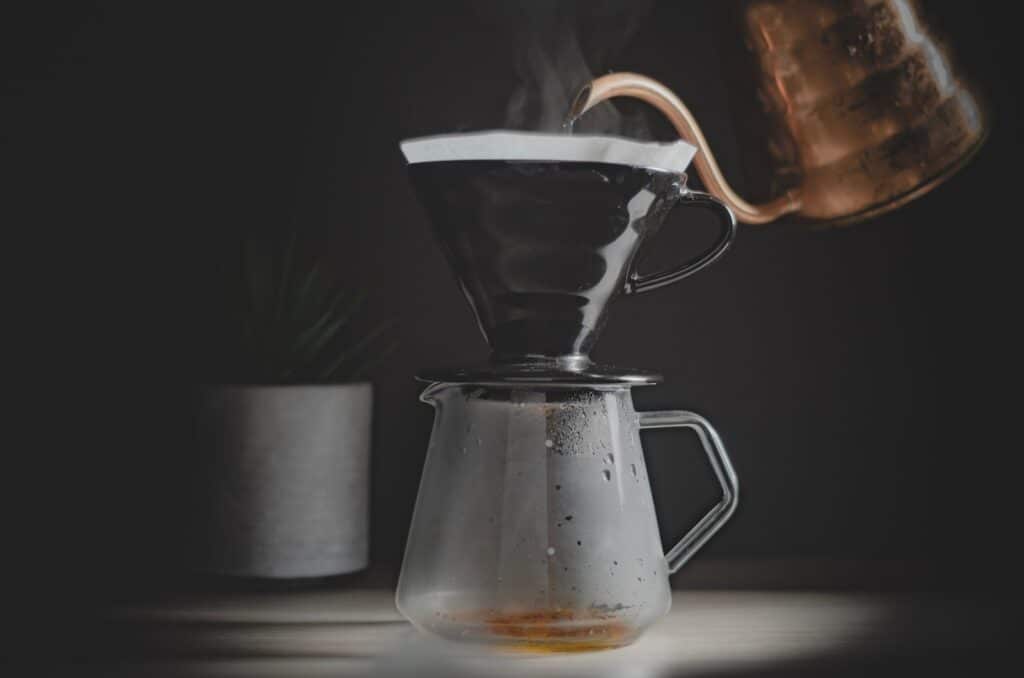
Details about the Pour-Over Method and Equipment: Pour-over is a manual coffee brewing method celebrated for its simplicity and the delightful control it offers over the brewing process. The essential equipment includes:
- Pour-Over Cone: This can be made of glass, ceramic, metal, or plastic, and holds the coffee filter. Popular brands include Hario V60 and Chemex.
- Filters: These can be paper, which offer a cleaner cup by trapping more oils and fines, or metal, which allow more oils to pass through and give a richer taste.
- Kettle: A gooseneck kettle is recommended for controlled and precise water pouring.
- Scale: To measure coffee and water for accurate ratios.
- Grinder: A good quality burr grinder to grind coffee beans to the right consistency.
The Art and Science of Pour-Over Brewing:
- Grinding: Coffee beans are ground to a medium-coarse consistency, similar to sea salt.
- Bloom: Hot water is first poured over the grounds to allow them to ‘bloom’, releasing CO2 and enhancing flavor extraction.
- Pouring Technique: Water is then poured in a slow, steady spiral, starting from the center and moving outward. This technique ensures even saturation of the coffee grounds.
- Extraction Time: The total brew time varies, but it typically takes about 3 to 4 minutes.
Why Pour-Over is Favored by Coffee Enthusiasts:
- Control Over Variables: Pour-over brewing gives the brewer control over every variable in the brewing process – the water temperature, the rate of pour, the grind size, and the overall brewing time.
- Enhanced Flavor Profile: This method allows for a more nuanced extraction, highlighting the unique flavors and aromas of different coffee beans.
- Precision and Ritual: The pour-over method is as much about the ritual and precision as it is about the end product. The manual process is meditative and satisfying for many enthusiasts.
- Customization: Each cup can be tailored to personal taste preferences, making it ideal for those who view coffee brewing as a culinary art.
In conclusion, pour-over coffee brewing is more than just a method; it’s an expression of the art and science of coffee. It appeals to those who appreciate the nuances of flavor and the joy of crafting a perfect cup of coffee with their own hands.
Cold Brew
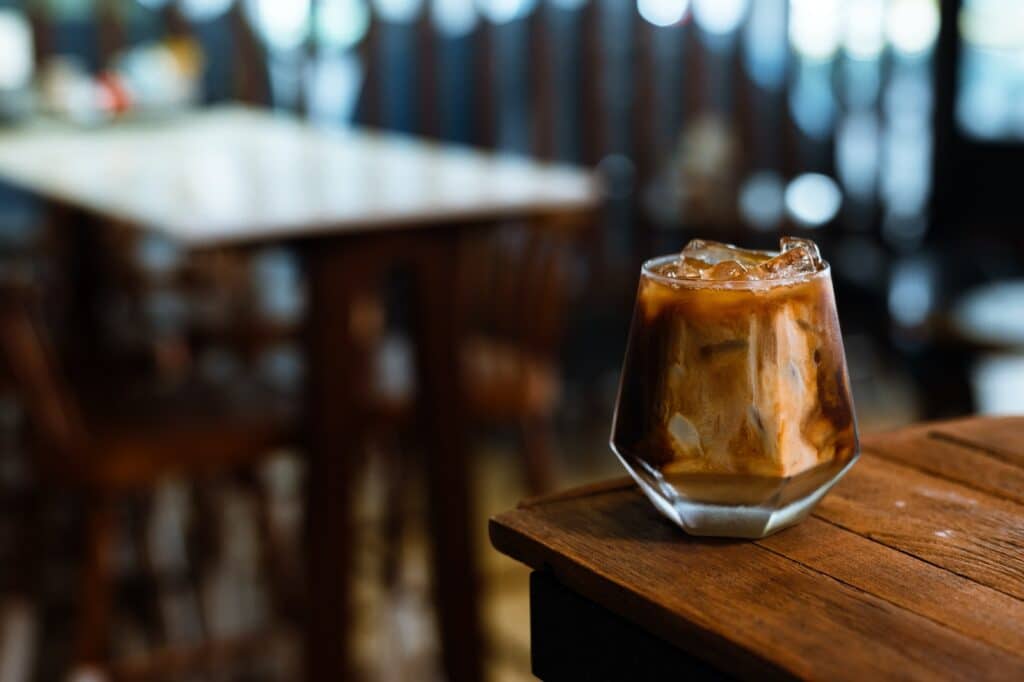
Explanation of Cold Brew Coffee and How It Differs from Iced Coffee: Cold brew coffee is a coffee concentrate brewed with cold water over an extended period, typically 12 to 24 hours. Unlike iced coffee, which is simply hot brewed coffee that’s cooled down and served over ice, cold brew is made without any heat. This fundamental difference in brewing technique results in distinct flavor profiles:
- Flavor: Cold brew tends to have a smoother, sweeter profile, with less acidity and bitterness than iced coffee.
- Strength: It is often more potent in terms of caffeine concentration, although this can vary based on the water-to-coffee ratio.
- Texture: Cold brew usually has a fuller body compared to iced coffee, which can be more watery.
Process of Making Cold Brew:
- Coffee Grounds: Coarsely ground coffee is preferred, as it allows for a clean extraction and easy filtration.
- Mixing with Cold Water: The grounds are mixed with cold or room temperature water. The ratio of coffee to water can vary, but a good starting point is about 1:8.
- Steeping: The mixture is left to steep at room temperature or in a refrigerator. The steeping time can range from 12 to 24 hours, depending on the desired strength.
- Straining: After steeping, the coffee is filtered to remove the grounds. This can be done with a fine mesh, cheesecloth, or a paper filter.
- Serving: The resulting concentrate is usually diluted with water or milk and can be served over ice. It can be stored in the refrigerator for up to two weeks.
Benefits and Unique Flavor Profile:
- Reduced Acidity and Bitterness: Cold brewing produces a coffee that is lower in acidity and bitterness, making it gentler on the stomach and appealing to those who find hot brewed coffee too harsh.
- Versatility: The concentrate can be used to make a variety of coffee drinks, from simple iced coffees to more elaborate concoctions.
- Long Shelf Life: Cold brew concentrate can be stored in the fridge for an extended period without a significant loss of flavor.
- Convenience: Once prepared, it offers a quick and easy way to enjoy coffee throughout the week.
In summary, cold brew coffee offers a unique and refreshing approach to coffee, differentiating itself from traditional hot brewing methods and iced coffee through its smooth, sweet flavor profile, and reduced acidity. Its ease of preparation and versatility make it a popular choice, especially in warmer climates and for those seeking a milder coffee experience.
Moka Pot
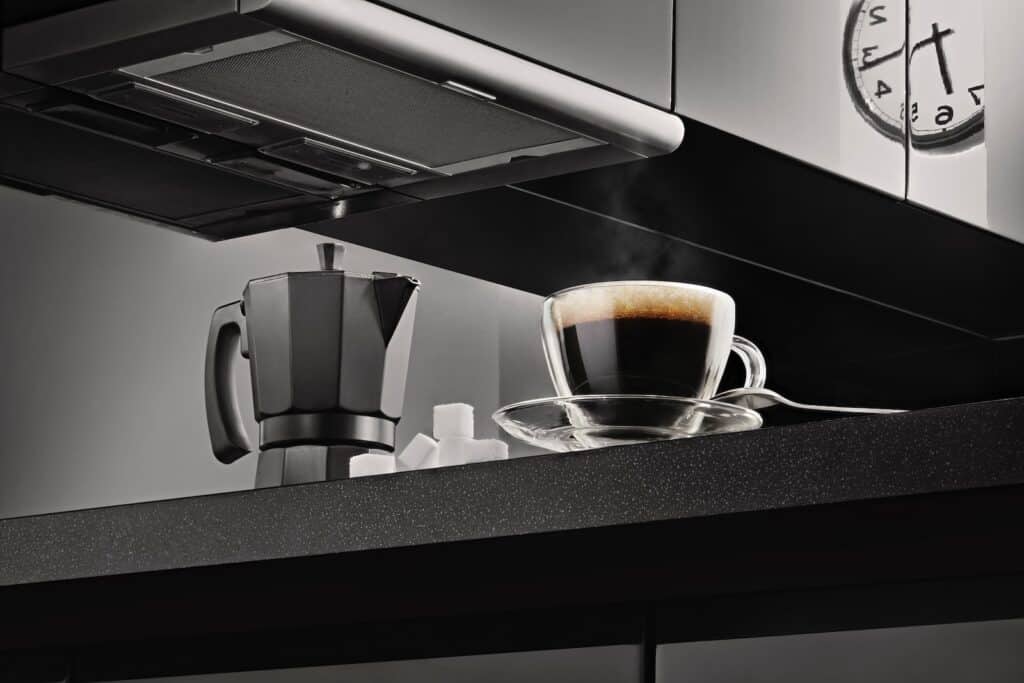
Description of the Moka Pot and Its Italian Origins: The Moka Pot, often referred to as a stovetop espresso maker, is an iconic coffee brewing device with deep roots in Italian coffee culture. Invented in 1933 by Alfonso Bialetti, the Moka Pot revolutionized home coffee brewing in Italy and around the world. It’s recognized for its distinctive octagonal shape and is typically made from aluminum or stainless steel. The Moka Pot is admired for its ability to produce a coffee with a concentration and richness similar to espresso, without the need for the expensive and complex machinery used in espresso machines.
Brewing Process and the Resulting Espresso-Like Coffee:
- Filling the Lower Chamber: Water is poured into the bottom chamber of the Moka Pot up to the safety valve.
- Adding Coffee: Finely ground coffee is placed in the filter basket. The grounds should be leveled but not tamped down.
- Assembly and Heating: The Moka Pot is assembled and placed on a heat source. The heat forces the water through the grounds and up into the upper chamber.
- Completion: As the coffee starts to fill the upper chamber, you’ll hear a gurgling sound. Once the bubbling becomes more pronounced, the Moka Pot is removed from the heat.
Tips for Achieving the Best Results with a Moka Pot:
- Use Freshly Ground Coffee: For the best flavor, use coffee that’s freshly ground to a fine but not powdery consistency.
- Preheat the Water: Starting with hot water in the lower chamber can improve the quality of the brew and prevent over-extraction, which can cause bitterness.
- Avoid High Heat: Cook on medium to low heat to prevent the coffee from burning.
- Do Not Tamp the Coffee: Unlike an espresso machine, the coffee in a Moka Pot should not be tamped. Simply level the grounds.
- Remove from Heat Early: To avoid a burnt taste, remove the Moka Pot from the heat just as the coffee starts to change in color, typically from dark to a lighter, honey-like color.
- Clean After Each Use: Regular cleaning is crucial to prevent buildup and maintain the quality of the coffee.
In conclusion, the Moka Pot is a beloved brewing method for those who appreciate a rich and robust cup of coffee. Its simplicity, combined with the ability to produce an espresso-like brew, makes it a favorite among coffee lovers who enjoy the ritual and art of stovetop brewing.
Conclusion
In this journey through the diverse world of coffee makers, we have explored a variety of brewing methods, each with its unique characteristics and appeal. From the classic French Press, known for its rich and robust flavor, to the modern convenience of Single Serve machines; from the strong and nostalgic brew of the Percolator to the precision and clarity of AeroPress coffee; from the consistent and familiar Drip Coffee Maker to the artisanal charm of Pour Over; from the smooth and refreshing Cold Brew to the traditional and intense Moka Pot espresso-like experience – we’ve seen how different brewing methods can significantly influence the taste, texture, and overall enjoyment of coffee.
This exploration encourages not just an appreciation for the various brewing methods, but also an invitation to experiment. Each method offers a unique way to experience coffee, and trying out different types can lead to a deeper understanding and appreciation of this beloved beverage. Whether you prefer the ritual of manual brewing or the convenience of an automated machine, there is a coffee maker that aligns with your lifestyle and taste preferences.
Coffee is more than just a drink; it’s a global phenomenon that brings people together, a hobby for those who delight in its craft, and a daily ritual that offers moments of solace and reflection. The act of brewing coffee, in whatever form it takes, can be a meditative and enjoyable part of the day. It’s about finding joy in the process as much as in the cup.
As you continue your coffee journey, remember that each cup of coffee is an opportunity to experience something new. Whether you’re savoring a quiet morning with a freshly brewed cup or sharing a pot with friends, coffee is a versatile and enriching part of our lives. So, go ahead, explore these brewing methods, and find the one that resonates with you. Here’s to the joy of coffee – in all its forms!
